Nasir Saeed
Integrating LLMs with ITS: Recent Advances, Potentials, Challenges, and Future Directions
Jan 08, 2025Abstract:Intelligent Transportation Systems (ITS) are crucial for the development and operation of smart cities, addressing key challenges in efficiency, productivity, and environmental sustainability. This paper comprehensively reviews the transformative potential of Large Language Models (LLMs) in optimizing ITS. Initially, we provide an extensive overview of ITS, highlighting its components, operational principles, and overall effectiveness. We then delve into the theoretical background of various LLM techniques, such as GPT, T5, CTRL, and BERT, elucidating their relevance to ITS applications. Following this, we examine the wide-ranging applications of LLMs within ITS, including traffic flow prediction, vehicle detection and classification, autonomous driving, traffic sign recognition, and pedestrian detection. Our analysis reveals how these advanced models can significantly enhance traffic management and safety. Finally, we explore the challenges and limitations LLMs face in ITS, such as data availability, computational constraints, and ethical considerations. We also present several future research directions and potential innovations to address these challenges. This paper aims to guide researchers and practitioners through the complexities and opportunities of integrating LLMs in ITS, offering a roadmap to create more efficient, sustainable, and responsive next-generation transportation systems.
Eco-Friendly 0G Networks: Unlocking the Power of Backscatter Communications for a Greener Future
Nov 20, 2024



Abstract:Backscatter Communication (BackCom) technology has emerged as a promising paradigm for the Green Internet of Things (IoT) ecosystem, offering advantages such as low power consumption, cost-effectiveness, and ease of deployment. While traditional BackCom systems, such as RFID technology, have found widespread applications, the advent of ambient backscatter presents new opportunities for expanding applications and enhancing capabilities. Moreover, ongoing standardization efforts are actively focusing on BackCom technologies, positioning them as a potential solution to meet the near-zero power consumption and massive connectivity requirements of next-generation wireless systems. 0G networks have the potential to provide advanced solutions by leveraging BackCom technology to deliver ultra-low-power, ubiquitous connectivity for the expanding IoT ecosystem, supporting billions of devices with minimal energy consumption. This paper investigates the integration of BackCom and 0G networks to enhance the capabilities of traditional BackCom systems and enable Green IoT. We conduct an in-depth analysis of BackCom-enabled 0G networks, exploring their architecture and operational objectives, and also explore the Waste Factor (WF) metric for evaluating energy efficiency and minimizing energy waste within integrated systems. By examining both structural and operational aspects, we demonstrate how this synergy enhances the performance, scalability, and sustainability of next-generation wireless networks. Moreover, we highlight possible applications, open challenges, and future directions, offering valuable insights for guiding future research and practical implementations aimed at achieving large-scale, sustainable IoT deployments.
LoRa Communication for Agriculture 4.0: Opportunities, Challenges, and Future Directions
Sep 17, 2024Abstract:The emerging field of smart agriculture leverages the Internet of Things (IoT) to revolutionize farming practices. This paper investigates the transformative potential of Long Range (LoRa) technology as a key enabler of long-range wireless communication for agricultural IoT systems. By reviewing existing literature, we identify a gap in research specifically focused on LoRa's prospects and challenges from a communication perspective in smart agriculture. We delve into the details of LoRa-based agricultural networks, covering network architecture design, Physical Layer (PHY) considerations tailored to the agricultural environment, and channel modeling techniques that account for soil characteristics. The paper further explores relaying and routing mechanisms that address the challenges of extending network coverage and optimizing data transmission in vast agricultural landscapes. Transitioning to practical aspects, we discuss sensor deployment strategies and energy management techniques, offering insights for real-world deployments. A comparative analysis of LoRa with other wireless communication technologies employed in agricultural IoT applications highlights its strengths and weaknesses in this context. Furthermore, the paper outlines several future research directions to leverage the potential of LoRa-based agriculture 4.0. These include advancements in channel modeling for diverse farming environments, novel relay routing algorithms, integrating emerging sensor technologies like hyper-spectral imaging and drone-based sensing, on-device Artificial Intelligence (AI) models, and sustainable solutions. This survey can guide researchers, technologists, and practitioners to understand, implement, and propel smart agriculture initiatives using LoRa technology.
Large Language Models for UAVs: Current State and Pathways to the Future
May 02, 2024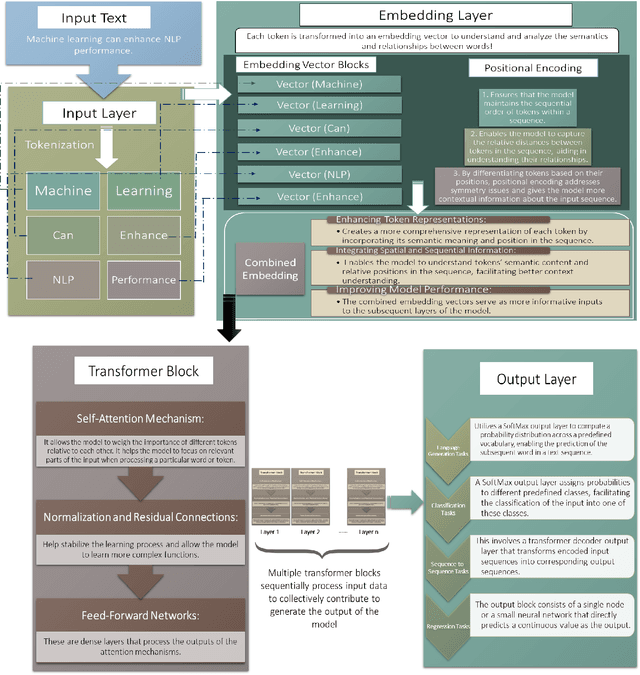
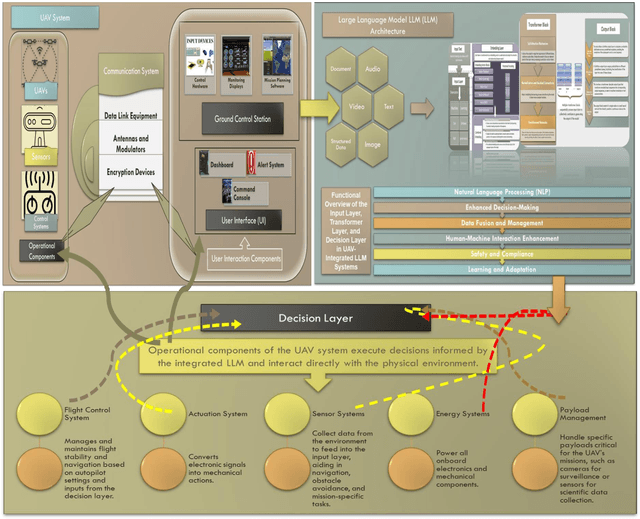
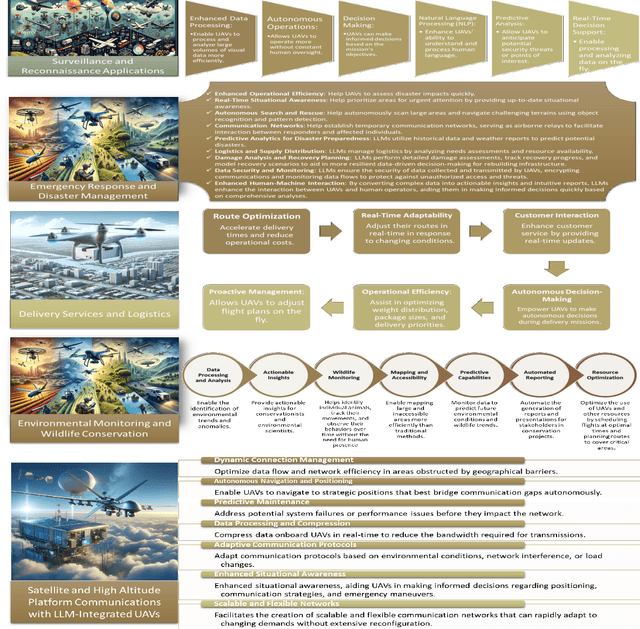
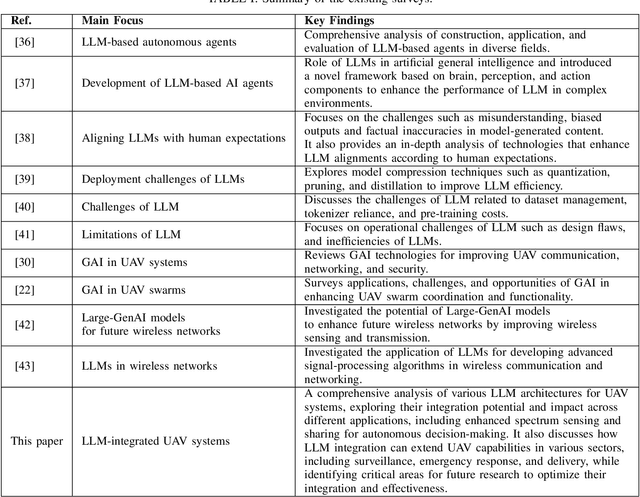
Abstract:Unmanned Aerial Vehicles (UAVs) have emerged as a transformative technology across diverse sectors, offering adaptable solutions to complex challenges in both military and civilian domains. Their expanding capabilities present a platform for further advancement by integrating cutting-edge computational tools like Artificial Intelligence (AI) and Machine Learning (ML) algorithms. These advancements have significantly impacted various facets of human life, fostering an era of unparalleled efficiency and convenience. Large Language Models (LLMs), a key component of AI, exhibit remarkable learning and adaptation capabilities within deployed environments, demonstrating an evolving form of intelligence with the potential to approach human-level proficiency. This work explores the significant potential of integrating UAVs and LLMs to propel the development of autonomous systems. We comprehensively review LLM architectures, evaluating their suitability for UAV integration. Additionally, we summarize the state-of-the-art LLM-based UAV architectures and identify novel opportunities for LLM embedding within UAV frameworks. Notably, we focus on leveraging LLMs to refine data analysis and decision-making processes, specifically for enhanced spectral sensing and sharing in UAV applications. Furthermore, we investigate how LLM integration expands the scope of existing UAV applications, enabling autonomous data processing, improved decision-making, and faster response times in emergency scenarios like disaster response and network restoration. Finally, we highlight crucial areas for future research that are critical for facilitating the effective integration of LLMs and UAVs.
Beyond Line of Sight Defense Communication Systems: Recent Advances and Future Challenges
Dec 11, 2023Abstract:Beyond Line of Sight (BLOS) communication stands as an indispensable element within defense communication strategies, facilitating information exchange in scenarios where traditional Line of Sight (LOS) methodologies encounter obstruction. This article delves into the forefront of technologies driving BLOS communication, emphasizing advanced systems like phantom networks, nanonetworks, aerial relays, and satellite-based defense communication. Moreover, we present a practical use case of UAV path planning using optimization techniques amidst radar-threat war zones that add concrete relevance, underscoring the tangible applications of BLOS defense communication systems. Additionally, we present several future research directions for BLOS communication in defense systems, such as resilience enhancement, the integration of heterogeneous networks, management of contested spectrums, advancements in multimedia communication, adaptive methodologies, and the burgeoning domain of the Internet of Military Things (IoMT). This exploration of BLOS technologies and their applications lays the groundwork for synergistic collaboration between industry and academia, fostering innovation in defense communication paradigms.
Data-driven Integrated Sensing and Communication: Recent Advances, Challenges, and Future Prospects
Aug 17, 2023

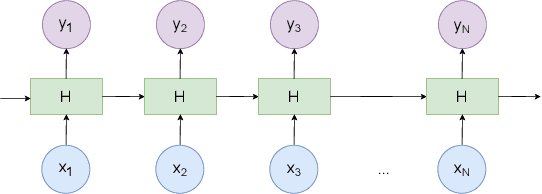
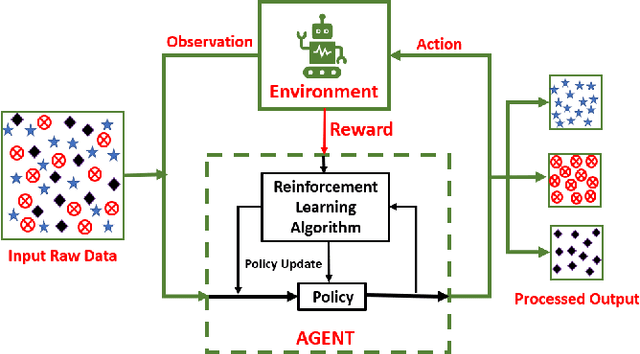
Abstract:Integrated Sensing and Communication (ISAC), combined with data-driven approaches, has emerged as a highly significant field, garnering considerable attention from academia and industry. Its potential to enable wide-scale applications in the future sixth-generation (6G) networks has led to extensive recent research efforts. Machine learning (ML) techniques, including $K$-nearest neighbors (KNN), support vector machines (SVM), deep learning (DL) architectures, and reinforcement learning (RL) algorithms, have been deployed to address various design aspects of ISAC and its diverse applications. Therefore, this paper aims to explore integrating various ML techniques into ISAC systems, covering various applications. These applications span intelligent vehicular networks, encompassing unmanned aerial vehicles (UAVs) and autonomous cars, as well as radar applications, localization and tracking, millimeter wave (mmWave) and Terahertz (THz) communication, and beamforming. The contributions of this paper lie in its comprehensive survey of ML-based works in the ISAC domain and its identification of challenges and future research directions. By synthesizing the existing knowledge and proposing new research avenues, this survey serves as a valuable resource for researchers, practitioners, and stakeholders involved in advancing the capabilities of ISAC systems in the context of 6G networks.
Near-Field Integrated Sensing and Communication: Performance Analysis and Beamforming Design
Aug 12, 2023

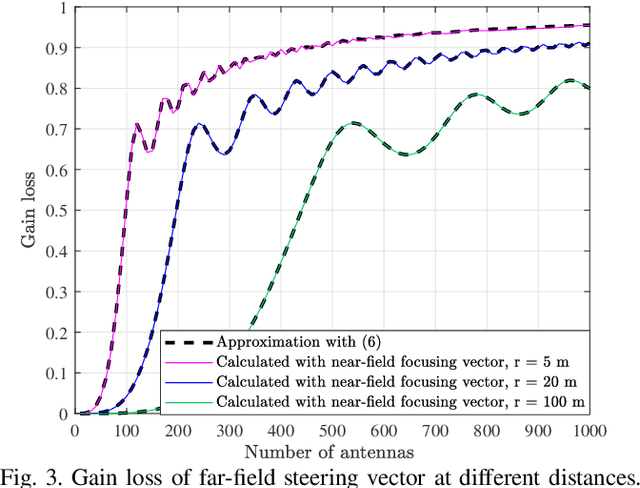

Abstract:This paper explores the potential of near-field beamforming (NFBF) in integrated sensing and communication (ISAC) systems with extremely large-scale arrays (XL-arrays). The large-scale antenna arrays increase the possibility of having communication users and targets of interest in the near field of the base station (BS). The paper first establishes the models of electromagnetic (EM) near-field spherical waves and far-field plane waves. With the models, we analyze the near-field beam focusing ability and the far-field beam steering ability by finding the gain-loss mathematical expression caused by the far-field steering vector mismatch in the near-field case. We formulate the NFBF design problem as minimizing the weighted summation of radar and the communication beamforming errors under a total power constraint and solve this quadratically constrained quadratic programming (QCQP) problem using the least squares (LS) method. Moreover, the Cram\'er-Rao bound (CRB) for target parameter estimation is derived to verify the performance of NFBF. Furthermore, we also perform power minimization using convex optimization while ensuring the required communication and sensing quality-of-service (QoS). The simulation results show the influence of model mismatch on near-field ISAC and the performance gain of transmit beamforming from the additional distance dimension of near-field.
Near-Field Integrated Sensing and Communications: Unlocking Potentials and Shaping the Future
Aug 05, 2023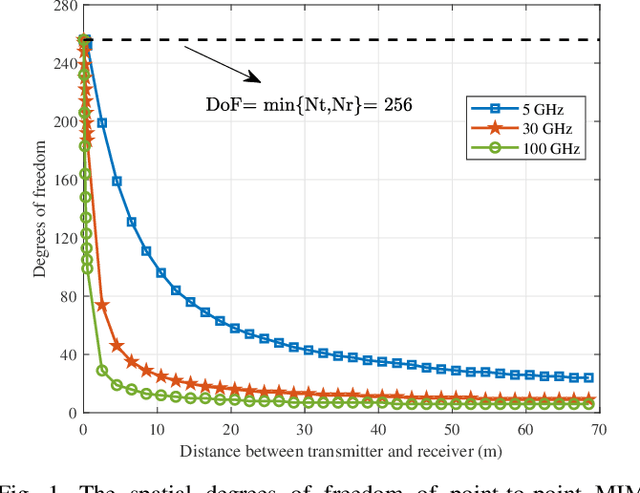
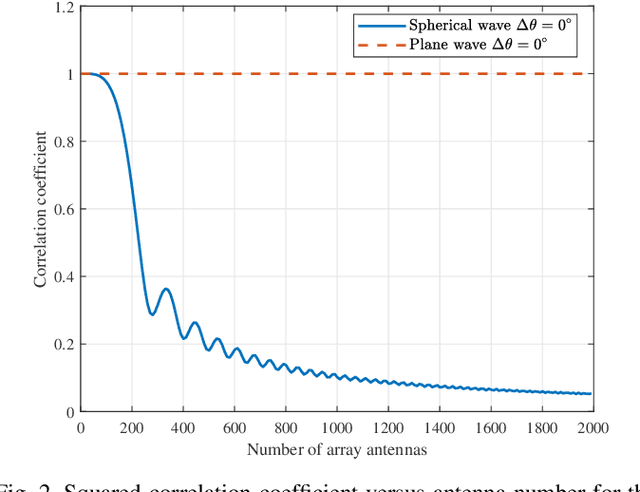
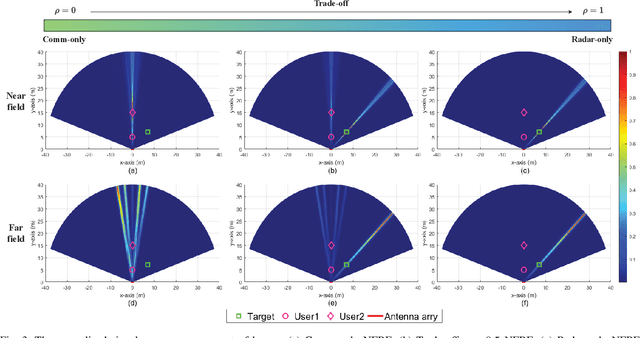
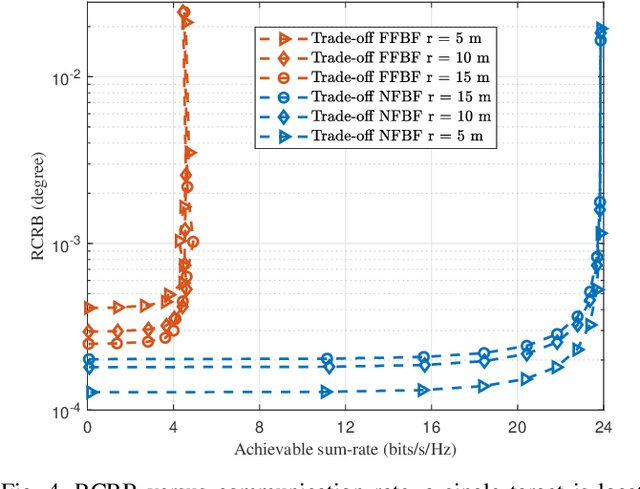
Abstract:The sixth generation (6G) communication networks are featured by integrated sensing and communications (ISAC), revolutionizing base stations (BSs) and terminals. Additionally, in the unfolding 6G landscape, a pivotal physical layer technology, the Extremely Large-Scale Antenna Array (ELAA), assumes center stage. With its expansive coverage of the near-field region, ELAA's electromagnetic (EM) waves manifest captivating spherical wave properties. Embracing these distinctive features, communication and sensing capabilities scale unprecedented heights. Therefore, we systematically explore the prodigious potential of near-field ISAC technology. In particular, the fundamental principles of near-field are presented to unearth its benefits in both communication and sensing. Then, we delve into the technologies underpinning near-field communication and sensing, unraveling possibilities discussed in recent works. We then investigated the advantages of near-field ISAC through rigorous case simulations, showcasing the benefits of near-field ISAC and reinforcing its stature as a transformative paradigm. As we conclude, we confront the open frontiers and chart the future directions for near-field ISAC.
Communication and Control in Collaborative UAVs: Recent Advances and Future Trends
Feb 23, 2023



Abstract:The recent progress in unmanned aerial vehicles (UAV) technology has significantly advanced UAV-based applications for military, civil, and commercial domains. Nevertheless, the challenges of establishing high-speed communication links, flexible control strategies, and developing efficient collaborative decision-making algorithms for a swarm of UAVs limit their autonomy, robustness, and reliability. Thus, a growing focus has been witnessed on collaborative communication to allow a swarm of UAVs to coordinate and communicate autonomously for the cooperative completion of tasks in a short time with improved efficiency and reliability. This work presents a comprehensive review of collaborative communication in a multi-UAV system. We thoroughly discuss the characteristics of intelligent UAVs and their communication and control requirements for autonomous collaboration and coordination. Moreover, we review various UAV collaboration tasks, summarize the applications of UAV swarm networks for dense urban environments and present the use case scenarios to highlight the current developments of UAV-based applications in various domains. Finally, we identify several exciting future research direction that needs attention for advancing the research in collaborative UAVs.
Semantic Communications with Ordered Importance using ChatGPT
Feb 12, 2023



Abstract:This letter proposes a novel semantic communication scheme with ordered importance (SCOI) using the chat generative pre-trained transformer (ChatGPT). In the proposed SCOI scheme, ChatGPT plays the role of a consulting assistant. Given a message to be transmitted, the transmitter first queries ChatGPT to output the importance order of each word. According to the importance order, the transmitter then performs an unequal error protection transmission strategy to make the transmission of essential words more reliable. Unlike the existing semantic communication schemes, SCOI is compatible with existing source-channel separation designs and can be directly embedded into current communication systems. Our experimental results show that both the transmission bit error rate (BER) of important words and the semantic loss measured by ChatGPT are much lower than the existing communication schemes.
 Add to Chrome
Add to Chrome Add to Firefox
Add to Firefox Add to Edge
Add to Edge